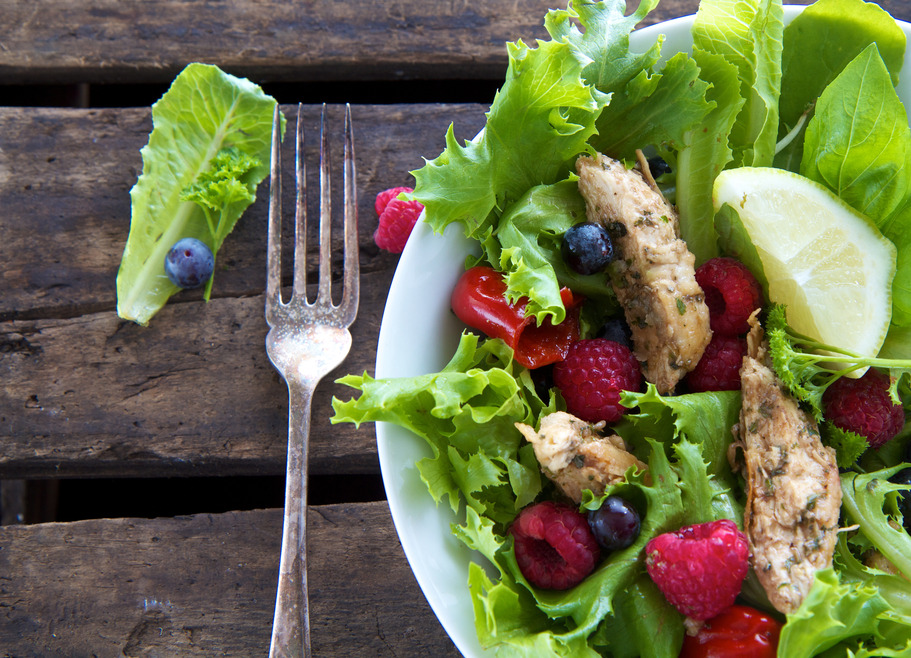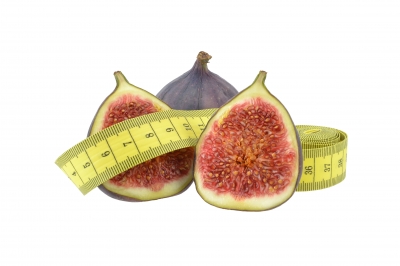
For me and many of those I serve, weight management is nothing less than a spiritual path to wholeness. Do I get sick of having to manage my weight? Absolutely. Do I wish that there would be a time when I didn’t have to think about it? Are there days when it’s the last thing I want to think (or write or teach!) about? Yep.
That’s the thing about spiritual paths. It’s not fun and games all (or even most) of the time. The ecstasy is fun and with practice comes more easily, and I know that my weight fatigue is a necessary part of the ecstasy I’ll be feeling tomorrow.
Feeling really sick of my spiritual path is an indicator. It usually means that I need to look at my path in a new light or from a different angle. It’s tempting to give up, backslide, binge and give up. But no, this is my path, and feeling sick of it is on the path.
I also start to look around for ways to be fantastic to myself while staying on (or near) my path. This is how I was taught. To be compassionate to myself, stay, and to get curious about the experience of what I am feeling. Hmmm…I wonder what that being sick of it is about – really? To stay with it and watch it rather than react.

For me it’s the combination of the smell of incense thick in the air, the swing of golden incense pots and the slow procession of men in white. I don’t go to Mass anymore, and am not Catholic for all the usual reasons. Nonetheless, one of many things that upbringing gave me was a love of and understanding of the importance of ritual in my life. From baptism to last rites, a Catholic knows the ceremonies and rituals that tie their lives to an ancestral thread.
The rise of secular culture and the “me generation” is marked by greater acceptance toward those different from ourselves (with notable holdouts), but also less drive to maintain the ritual containers provided by religious and cultural ceremony. The re-emergence of earth cultures, of indigenous shamanic ritual, is perhaps a seeking to re-ritualize our lives. We need to find a new set of rituals to connect us back to the earth, to our ancestors and to the mystery that lies at the heart of all life again.
Rituals are acts performed in a certain way to realize an intention. They are things that we do, often that our ancestors or others have done before for the same effect, often in ceremonial events. They can provide a thread of meaning to mark a transition or close a chapter, honor an aspect of life, or connect us to the mystery and miracle of life. Ceremony and ritual allow us to take a step back, pause time, and be in the miraculous web of our own lives here on earth.
Einstein said it well when thinking about the why: “The most beautiful thing we can experience is the mysterious,” he said. “It is the source of all true art and science. He to whom this emotion is a stranger, who can no longer stand rapt in awe, is as good as dead”. We need it to be fully us, and certainly to be our best selves.
Be it a morning ritual of lighting a candle and bowing to the 4 directions then above below and inside, or a morning or evening gratitude practice, plant bathing, or an elaborate ritual of gathering, clearing, and honoring a common intention (as we will do together at Yoga of Plants over the 4th of July weekend at Kripalu…still room left!), rituals capture time and remind us to feel the mystery.
Interested in learning more about ritual? Check out The Art of Ritual by Renee Beck and Sydney Barbara Metrick. It’s a clear, thoughtful and inspiring book. In my monthly newsletter, I often provide a step-by-step guide on a particular practice that can re-ritualize your life. That newsletter always provides ideas on leading a botanical natural weight lifestyle.
How to add meaning to life with ritual? Practice. All it takes is intention and practice.
What is your favorite ritual?
Enjoy the day. Summer in it’s fullness!

OK folks, it’s that time again. The Scientific Report for the Dietary Guidelines for Americans (DGA) is out, and it’s time for all nutritionists and foodie/activitists to dive in and weigh in. You have until early April to submit your comments.
Better process
While there is always the plus – minus of what each of us thinks the panel got right and wrong, I want to give a plug for the improvements in the process that have happened over the past decade. It’s much easier now to look behind the curtain of the recommendations and read and review the data upon which they are based. I like it! Every five years, this exercise helps me do an overview review of what the mainstream science says about food and nutrition. I encourage you, if you are interested, to check it out – at the very least, you will learn more about what the mainstream research actually says.
Evaluating evidence
One of the issues in diet debates today is that many of those with an opinion don’t actually know how to evaluate evidence or don’t take the time to. There is a whole lot of junk science, tiny studies and early data out there being used as consensus and the basis for diets. That’s part of the outrage over the DGA every time they come out – a misunderstanding of what the data actually says (and what the data actually is). The committee really does need to rely on the current state of high quality literature as the basis of their recommendations, and there have been some disasters in the past when they made recommendations that seemed to be true that were later proved false or incomplete. The betacarotene story is an example (the Institute of Medicine of the NIH set the recs high, then that level was found to increase cancer risk in smokers – oops).
The problem is that well-designed studies in major scientific centers are often funded by the food industries that benefit. And we all see that the whole truth of nutrition (and life) is that the fewer packages you buy, the better off you’ll be. So, the only science taking a good look at whole nutrition available to integrative dietitian nutritionists and other foodies is often in smaller studies sometimes not as well designed. Eventually, the whole truth will come out. Unfortunately, it will come out much more slowly than if we had a free unbiased system of scientific inquiry around food and nutrition. The full true story of human nutrition is not yet told by the Dietary Guidelines for Americans. In an imperfect world, it’s a start.
Weaving science & wisdom
Here’s how the DGA process influences my own food and eating philosophy.
I begin by knowing what the DGAs say and understanding the research basis for them. From there, I draw from scientific integrative models like functional nutrition, traditional wisdom systems like Western herbalism and Ayurveda, a healthy respect for human intuition (mine and my client’s) and an understanding that how and what we each eat has implications not only for our own bodies but for everything around us and the earth itself.
In the end, plants are the healers, eating clean whole high quality food made with love that honors who we are and the lives we lead will take most of us through our nutritional lives in balance. If you’re not in nutritional balance, a skilled integrative dietitian nutritionist can help you get there.
So much to talk about with the DGAs. Have you reviewed the data and recommendations? What do you think?

It’s been a big year for the science of integrative modalities this year. So, yours truly has been sharing scientific studies with my yoga teacher colleagues at Kripalu – they say “Wow!” and “Awesome.”
What’s old is new again (am I getting old or is this a repeating theme in life)? My teacher says life is a spiral and I continue to see the evidence that she’s right. I have so much enjoyed learning the ancient science of Ayurveda, and how my brilliant colleagues are applying that beautiful nature-based system to modern health care.
Here are the top trends, the memes I see on the rise:
1. Epigenetic
The yogis and yoginis are feeling prescient when we see the smattering of studies on yoga, meditation, mindfulness and that, in small studies, these modalities appear to change gene expression. Quickly. Impressively. Check it out.
Meditation changes gene expression.
2. Ayurveda
We’re at the beginning of a upward curve in the popularity of Ayurveda, and we’ll be hearing more about it as this system is viewed through a modern lens. The bookshelf of Ayurveda is exploding and we’re finding our intellectual leaders busy busy busy. Friend and colleague Hilary Garivaltis is traveling the country setting up Aurveda schools for yoga centers, and attendance at Kripalu’s really wonderful School of Ayurveda has more than doubled in the past couple years. Come to Kripalu and learn about this ancient traditional system that was the original integrative medicine.
Kripalu School of Ayurveda
3. Integration
The body knows. The body remembers. Can’t say it any more simply than that. Our bodies are the record of our lives (including our ancestors). All of what we do, think and believe is woven into the soft tissue of our fascia. If we spend our lives thinking we are not good enough (and I think this has somewhere somehow been programmed into us…Tom Kenyon says our creator did it!) in the end we in fact are not. Bummer! Yet the same person can focus on appreciating who they get to be, and a whole other body, whole other “resting face” are created. There are times when I’ve been rolling in the angst, when I can feel a tightness in my face as a drift off to sleep. That’s an indicator! I can soften and open as I age, or get bitter, brittle and hard. It’s not up to anyone else but me.
To learn what your body knows, do any body-mind practice regularly. Show up for it every day, or very nearly every day. It is showing up for yourself. My recommendation is predictable – come to Kripalu. For almost any program – follow what pings for you.
4. Herbs and Botanicals
Our ancestors, and not too too many generations back, had a wide array of botanical wisdom at their fingertips. We’ve outsourced that to our local pharmacy. But if you look around, people in every corner of the country are foraging, taking herb walks with the local herbalists, and checking out the botanicals in their own back yard. Please don’t wait to get a degree, but use your senses and good sense and a editable plant guide to find your way to better health. (Do be aware of the plants in your region that can, as my teacher says, heal you dead).
Get herbal and learn about learning more at Mountain Rose Herbal. OR study with Pam Montgomery or my friend Brittany at Thyme Herbal in Northampton, MA.
5. Eating for a Better Planet
How does the Atkn diet square with the fact that many environmentalists say we are past the global tipping point? Isn’t the meat-based version of Paleo in that same sink-the-earth boat? From Eco-Atkins to grass-fed local to values vegan, the choices we make about what we eat impact more than ourselves. There is more opportunity than ever to be a food activist – beginning at your own table.
Sustainable table is one place to start.
What are your top trends in nutrition now? Fascinated to hear!
Here it is. The holiday season.
Party time, candy and cookie time, rich food time. Estimates for how much Americans gain during this season range from 5 to 15 pounds, depending on who’s doing the reporting. And the particular parties you bless with your presence, I imagine. I wonder if the weight gain phenomenon is more prevalent in New England and the northern climes, but I’d love to hear stories and strategies from those in warmer places as to their situation and strategies for maintaining a healthy weight (and healthy habits) through this time. I imagine every region has it’s own spin on the bacchanal that is the holidays.
Here are few survival tips:
Accept the fact that you won’t be losing weight this month.
Regardless if you are a party momma or a stay-at-homer, there is just more high-calorie food around. Just maintaining is a feat this time of year, so relax on weight goals right now. January will be here soon enough.
Keep on moving. Practice stress management. Tie them together.
Keep physical activity top-of-mind this month, and don’t miss an opportunity to move. Physical activity is great stress management, so if you didn’t get your packages in the mail on time, didn’t get to cards this year, didn’t knit all your friends sweaters or didn’t get invited to the right parties, move a little to release the emotion that sits in your body as a result of life not being perfect.
Focus on the peeps, not the table.
Food traditions this time of year carry deep resonance and a strong pull. For me, it’s my mom’s cookies, and anything resembling eggnog. It’s not always easy to remember that the reason for the season is really love, hope and connectedness. I know that many family relationships can be challenging, and that can drive us to seek comfort from seasonal goodies in unhealthy quantities. There’s a Buddhist practice that may be helpful in working with relationships this season. The Dali Lama describes a practice of bowing down to the difficult people in your life, and thanking them for the opportunity they have provided to help you to experience spiritual growth. Love and honor them! For me, this practice a) cracks me up a little, and b) opens me up to another way to seeing things beyond the way my conditioned judgemental mind does. Somehow, it makes it easier for me to step back and see the people who challenge me differently, and to forgive them for the pain they cause me.
And finally:
Resist and renounce projections as to what it “should be”
As gifted American poet Mary Oliver says, Whoever you are, no matter how lonely or difficult your life is, the world opens itself to you this season. My wish for you is to feel that magic. My wish for you is that someone does the Buddhist practice of loving you when you cause them pain. And I wish you peace.
Namaste
Annie

Saving the Environment One Meal at a Time! Our modern society is more aware of climate change, and ways to combat it, then ever before. How about taking your eco-friendly lifestyle to the next step by applying it to your diet? The Environmental Working Group (EWG) created this article that highlight’s information from their full Meat Eater’s Guide. The graphic uses several peer-reviewed or government sponsored studies that measure carbon footprint, or “foodprint,” of common foods. The studies show that four ounces of foods such as lentils, tomatoes and 2% milk have the equivalent carbon footprint of less than one half mile driven in a car. The worst choice for our environment? Lamb; four ounces is roughly equivalent to ten miles driven. Chicken is the best meat choice, coming in at almost 2 miles driven. So not only are you what you eat, but so is our environment.
EWG also has a great list of resources to learn more about clean & sustainable eating. Every bite counts!
Here’s a copy of short version of the EWG Meat Eater’s Guide
Stay up on practical ways to cultivate a life in balance by subscribing to Annie’s almost-monthly newsletter.







